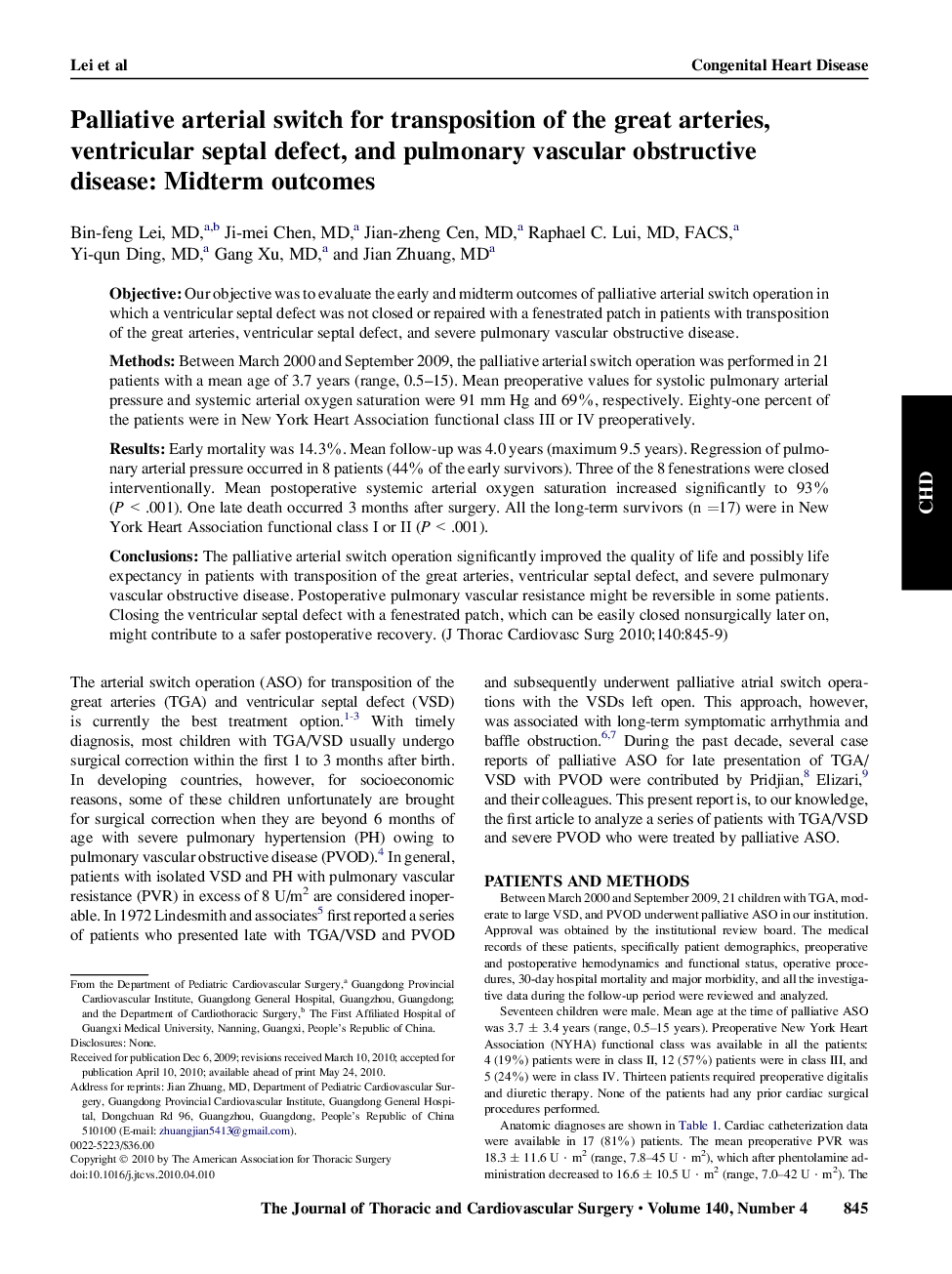| Article ID | Journal | Published Year | Pages | File Type |
|---|---|---|---|---|
| 2981929 | The Journal of Thoracic and Cardiovascular Surgery | 2010 | 5 Pages |
ObjectiveOur objective was to evaluate the early and midterm outcomes of palliative arterial switch operation in which a ventricular septal defect was not closed or repaired with a fenestrated patch in patients with transposition of the great arteries, ventricular septal defect, and severe pulmonary vascular obstructive disease.MethodsBetween March 2000 and September 2009, the palliative arterial switch operation was performed in 21 patients with a mean age of 3.7 years (range, 0.5–15). Mean preoperative values for systolic pulmonary arterial pressure and systemic arterial oxygen saturation were 91 mm Hg and 69%, respectively. Eighty-one percent of the patients were in New York Heart Association functional class III or IV preoperatively.ResultsEarly mortality was 14.3%. Mean follow-up was 4.0 years (maximum 9.5 years). Regression of pulmonary arterial pressure occurred in 8 patients (44% of the early survivors). Three of the 8 fenestrations were closed interventionally. Mean postoperative systemic arterial oxygen saturation increased significantly to 93% (P < .001). One late death occurred 3 months after surgery. All the long-term survivors (n =17) were in New York Heart Association functional class I or II (P < .001).ConclusionsThe palliative arterial switch operation significantly improved the quality of life and possibly life expectancy in patients with transposition of the great arteries, ventricular septal defect, and severe pulmonary vascular obstructive disease. Postoperative pulmonary vascular resistance might be reversible in some patients. Closing the ventricular septal defect with a fenestrated patch, which can be easily closed nonsurgically later on, might contribute to a safer postoperative recovery.
